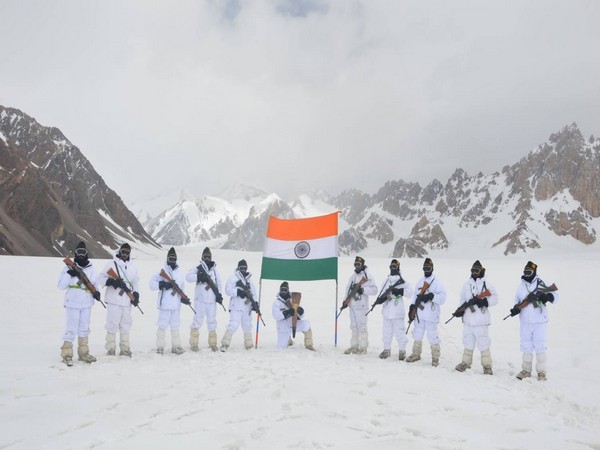Siachen Day is celebrated on 13 April, reminiscent of the Operation Meghdoot of the Indian Army in 1984. On this day, Indian soldiers landed at Bilafond La Pass and captured major bases on Siachen Glacier, leading to strategic benefits in the disputed region of the world’s highest battlefield Kashmir.
The poem “lurk in the snow, remaining quietly, when the bugle goes on, they will get up and march again” beautifully reflects the spirit of the Indian Army’s presence in Siachen. It throws light on the ability to be cautious and prepared even in the most difficult situations of soldiers and the ability to respond rapidly when called to protect the nation.
Indian soldiers have been deployed in a rigid environment of Siachen Glacier for decades, where they face excessive temperature and challenging terrain.
The day is a symbol of the historic beginning of Operation Meghdoot in 1984, when the Indian Army had established complete control over the Siachen Glacier, thwarting the efforts of the opponents to claim strategically important areas. It celebrates the 41st anniversary of the famous operation, which was carried out by the Indian Army.
Siachen has been a matter of dispute between India and Pakistan since the 1949 Karachi agreement, when the region was left undivided due to inaccessible terrain and extremely bad weather.
Operation Meghdoot was India’s adventure military reaction, which is described as the “recognized invasion” of New Delhi, Pakistan, which is in the unknown area of Ladakh, which is north of the map reference NJ 9842, where New Delhi and Islamabad agreed that the Line of Control (LoC) is spread for 100 kilometers.
After receiving intelligence about adjacent Pakistani military action, India deployed soldiers by air to secure Siachen’s strategic heights and delivered the logistics by air at the height airports.
The main objective behind this operation was to prevent the Pakistani Army from capturing Sia La and Bilafond La Pass.
The military campaign, launched on 13 April 1984, was unique as it was the first attack on the world’s highest battlefield. It was launched under the leadership of Lieutenant General Manohar Lal Chhibber, Lieutenant General PN Hoon and Major General Shiv Sharma.
It is one of the greatest examples of uninterrupted coordination and coordination between the Indian Army and the Air Force. As a result of military action, Indian soldiers gained control over the entire Siachen Glacier.
According to a press release last year, in this operation, the Indian Air Force brought soldiers of the Indian Army by air and launched the glacier peaks. Although the operation began in 1984, the Indian Air Force helicopters have been working in the Siachen Glacier since 1978, with Chetak helicopter flew, which was the first Indian Air Force helicopter to land in the glacier in October 1978.
The Indian Army started Operation Meghdoot to secure strategic heights on Siachen with the deployment of soldiers. Playing an irreparable role in this attempt, the strategic and strategic airlifters of the Indian Air Force, AN-12, AN-32 and IL-76 delivered the stores and soldiers and supplied to the high altitude air areas, from where Mi -7, MI-8, Chetak and Cheetah Helicopters brought to the glaciers and the materials to the glaciers, which were conveyed to the glaciers. Was more than.
The Siachen Glacier, located at an altitude of about 20,000 feet in the Karakoram mountain range, is known as the tallest military region worldwide.
It is located in such a strategic position that where it dominates the Shaksgam Valley (which was handed over to China in 1963) to the north, while controlling the routes leading from West to Gilgit Baltistan to Leh, and at the same time, it also dominates the ancient Karakaramum Pass in the eastern direction.
In addition, it borders the west to the entire Gilgit Baltistan, which is also an Indian region, which Pakistan illegally captured in 1948.
Every year, this day honors all the Siachen warriors who have successfully served their motherland by successfully thwarting the nefarious intentions of the enemy. Even today, the Siachen warriors continue to protect the ‘frozen marginal’ with perseverance and determination despite all obstacles.






